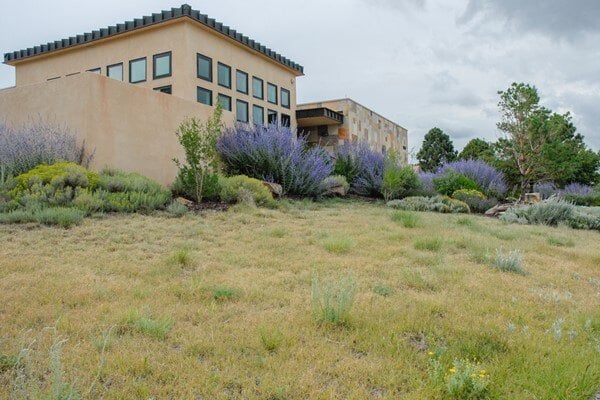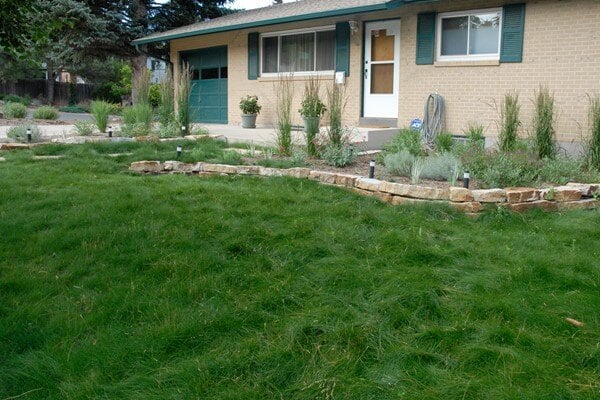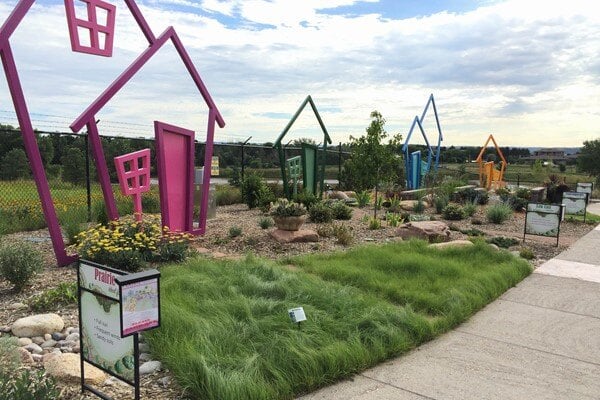Fringed Sage
Fringed sage is a common native plant found from the plains to montane regions of Colorado. The leaves are strongly aromatic.
It grows as a short, mounding perennial with erect stems and silvery-grey, feathery leaves. Covering the plant is an abundance of silvery hairs giving it a silky grey-green appearance.
Flower clusters are very small, measuring a quarter inch in diameter and made up of numerous tiny disk flowers. Fringed sage blooms from July to August.
This is a great plant for naturalistic landscapes, and for contrasting foliage color among other small plants. It mixes well with wildflowers and native grasses, too.
.jpg)
.jpg)
.jpg)
.jpg)
.jpg)
.jpg)
.jpg)
.jpg)
.jpg)
Fringed Sage
Fringed sage is a common native plant found from the plains to montane regions of Colorado. The leaves are strongly aromatic.
It grows as a short, mounding perennial with erect stems and silvery-grey, feathery leaves. Covering the plant is an abundance of silvery hairs giving it a silky grey-green appearance.
Flower clusters are very small, measuring a quarter inch in diameter and made up of numerous tiny disk flowers. Fringed sage blooms from July to August.
This is a great plant for naturalistic landscapes, and for contrasting foliage color among other small plants. It mixes well with wildflowers and native grasses, too.
Plant details
Botanic Name
Artemisia frigida
Pronunciation
ar-teh-MEEZ-ee-uh FRIH-jih-duh
Mature Height
6 to 15 in.
Mature Spread
18 to 24 in.
Water usage
One Droplet: Water twice per month or less, once established.
Two Droplets: Water about once per week, once established.
Three Droplets: Water about twice per week, once established.
Flower Color
yellow, but inconspicuous
Bloom time
midsummer
Colorado Native
Yes
Natural Habitat
central and western United States
Light Requirements
sun
Cold Hardiness
USDA zones 3-8
Elevation Limit
hardy to 10,000 ft.
Performance
At the Water Wise Demonstration Garden, fringed sage is used as a "filler plant" in the Dwarf Conifer Rock Garden. It also grows in between wildflowers and native grasses in low-maintenance areas.
Individual plants grow well for a few seasons, then die out. New seedlings appear regularly.
Fringed sage has also grown well in the no water zone on a south-facing slope.
Maintenance
Remove dead stems as needed.
See in a landscape
This front yard is a nice balance between contemporary and native using buffalograss as a natural looking grass area with shrubs and perennials that add color and texture to the landscape. These plants are low to very low water use and require maintenance only one or two times of year, making this yard low water and low maintenance. Since buffalograss grows less than 6 inches tall, this front yard could even go without mowing.
This corner lot was almost all Kentucky bluegrass before getting a xeric renovation that added water savings and design. The bluegrass was removed and replaced by stone retaining walls that showcase small xeric shrubs, ornamental grasses and flowering perennials. The bluegrass was replaced with a sheep fescue lawn that is mowed only once a year for a native look. Mowing this grass less frequently helps it use even less water by shading the ground and eliminating evaporation loss from cut grass blades. The large medians of this corner lot were re-landscaped to eliminate the bluegrass and add gravel blocks alternating with simple shrub planting beds with drip irrigation. The simple design of this renovation adds Colorado style while decreasing the water and maintenance that bluegrass requires.



.jpeg)
.jpeg)
.jpeg)
.jpeg)
.jpeg)
.jpeg)
.jpeg)
.jpeg)
.jpeg)
.jpeg)